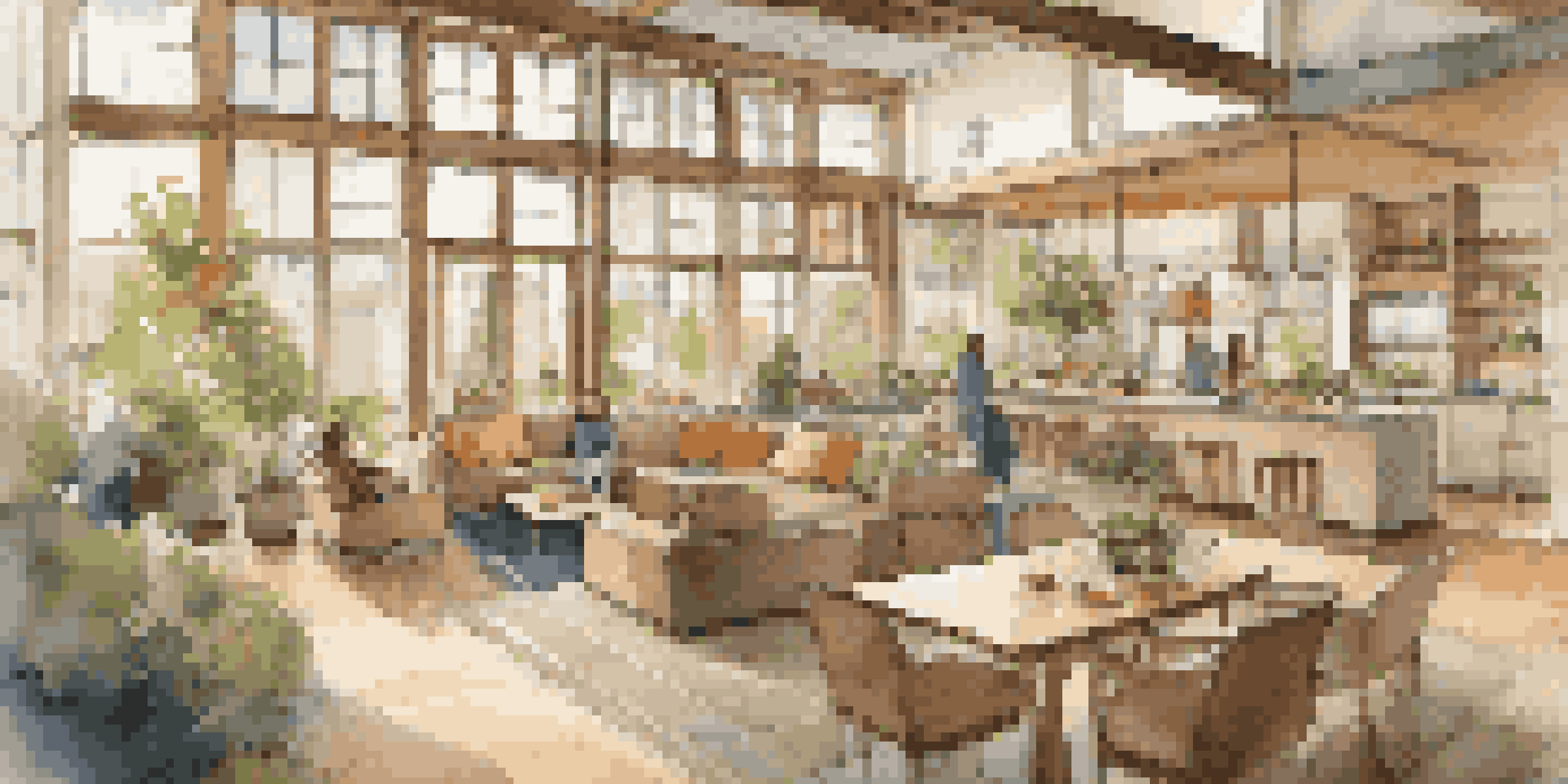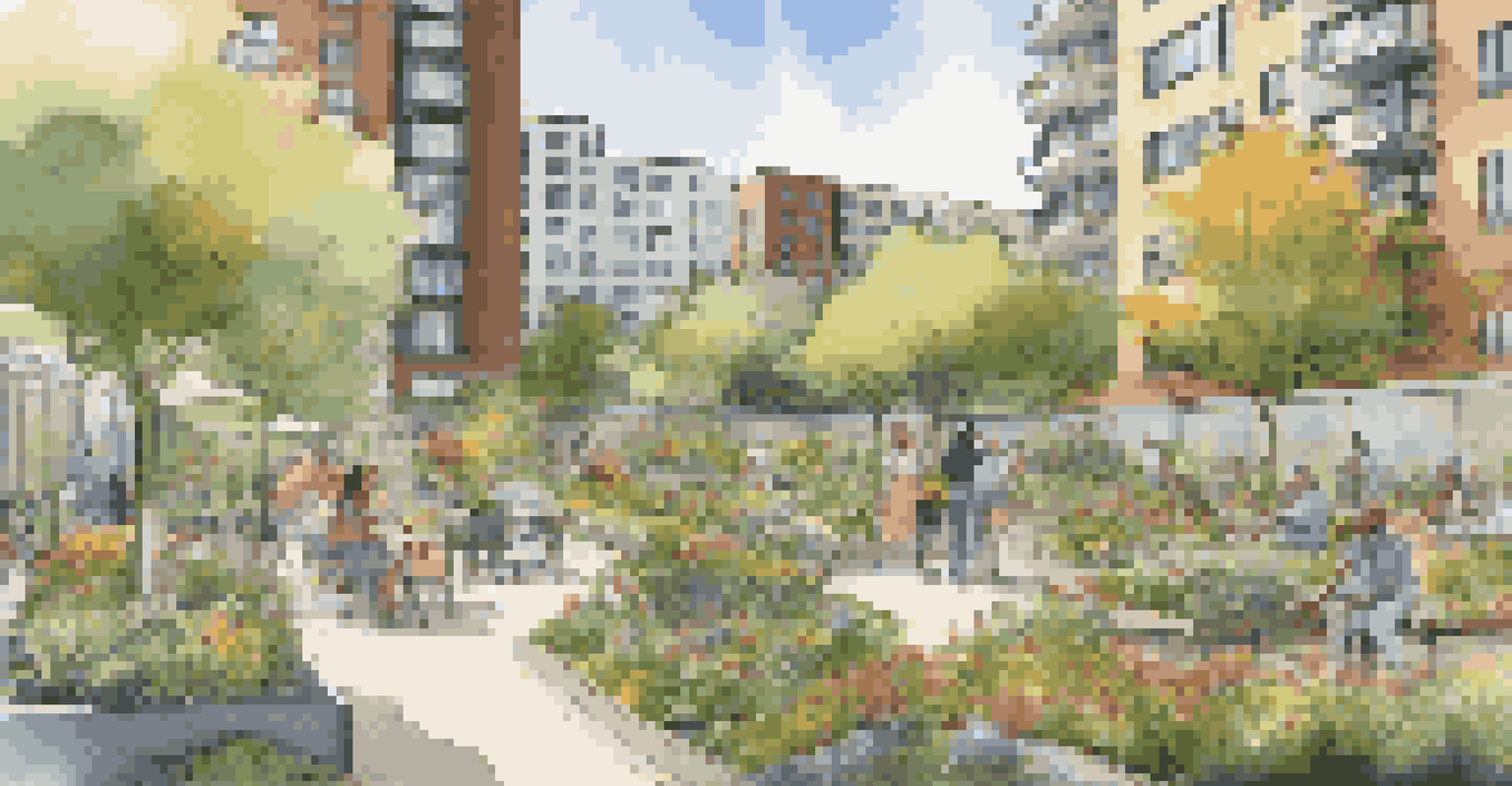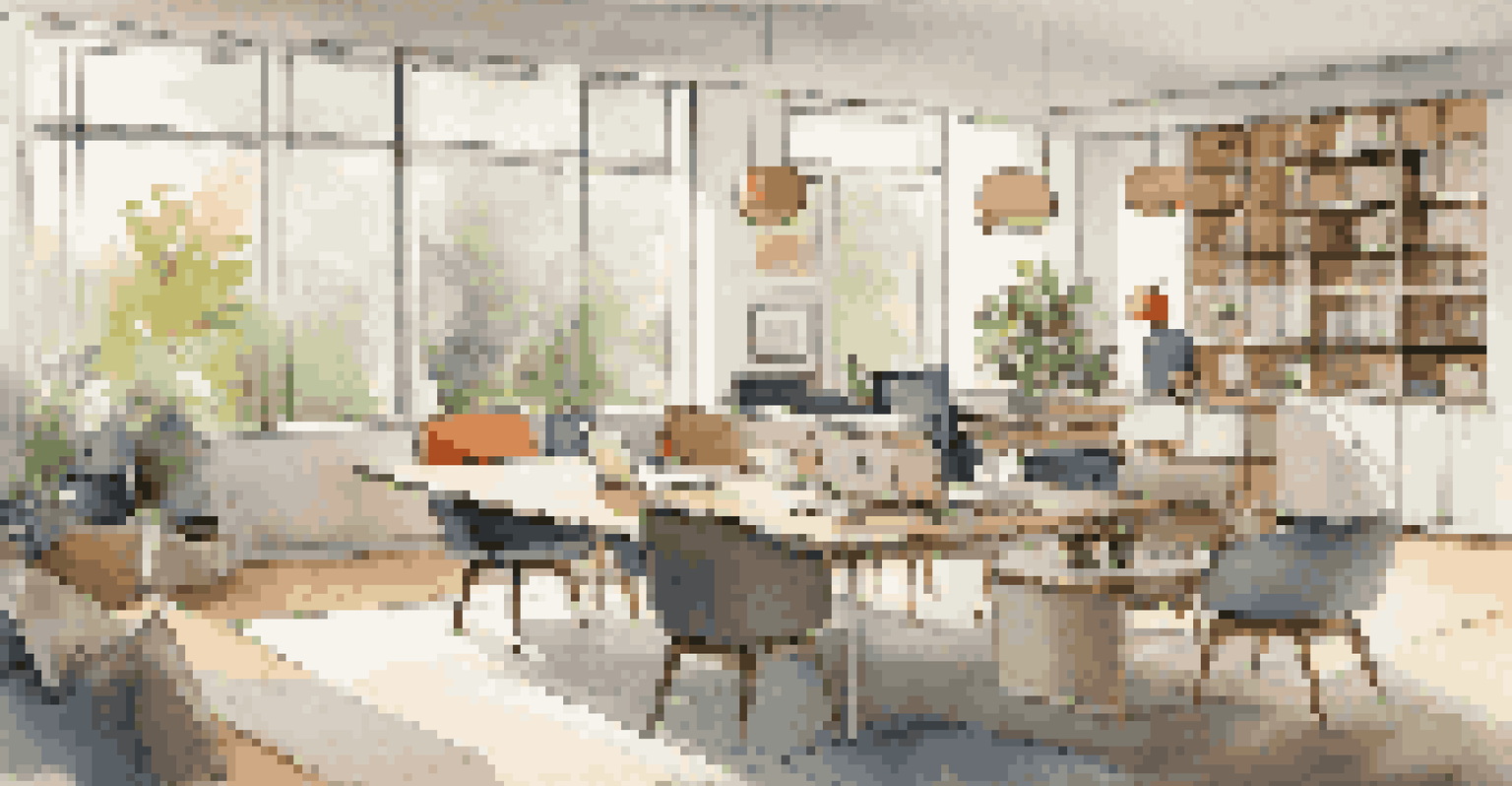Future Trends in Home Design: Emphasizing Community Spaces

The Rise of Communal Living Spaces in Home Design
As urbanization increases, the concept of communal living spaces is gaining traction. Homebuyers are now seeking designs that foster interaction among neighbors, creating a sense of belonging. These spaces can range from shared gardens to community lounges, encouraging residents to connect in meaningful ways.
The greatness of a community is most accurately measured by the compassionate actions of its members.
Incorporating communal areas into home designs not only enhances social interaction but also promotes a sustainable lifestyle. For instance, shared resources like tool libraries or community kitchens reduce individual consumption and create opportunities for collaboration. This shift reflects a growing desire for homes that support a communal lifestyle.
Architects and designers are responding to this trend with innovative layouts that prioritize shared spaces. By integrating common areas into residential designs, they are crafting environments where relationships can thrive. This focus on community is shaping the future of home design, making it more inclusive and engaging.
Design Elements That Foster Community Interaction
Certain design elements are particularly effective in encouraging community interaction. Open floor plans, for instance, facilitate gatherings by eliminating barriers between spaces. Additionally, features like large windows and outdoor patios create inviting environments, drawing people outside to socialize.

Another important aspect is the incorporation of multifunctional spaces. Designating areas that can serve multiple purposes—like a room that can be used for meetings, events, or casual hangouts—maximizes usability. These thoughtful design choices help nurture a sense of community, making it easier for residents to come together.
Communal Spaces Enhance Connections
Designs that incorporate shared areas foster interaction among neighbors and create a sense of belonging.
Furthermore, the use of natural materials and warm colors can create a welcoming atmosphere. When people feel comfortable in their surroundings, they are more likely to engage with their neighbors. This attention to detail in home design can significantly enhance the community experience.
Technology's Role in Community-Centric Home Design
Technology is playing a pivotal role in shaping community-centric home designs. Smart home features, like community apps, streamline communication among residents, making it easier to organize events or share resources. This tech-savvy approach connects people, fostering a sense of community right from the start.
We are all interconnected, and the way we design our homes and communities reflects that understanding.
Moreover, advancements in building technology allow for more efficient use of shared spaces. For instance, digital platforms can help manage community amenities, such as booking common areas or arranging maintenance. This level of convenience not only enhances the living experience but also strengthens community ties.
As technology continues to evolve, it will undoubtedly influence how we design homes for the future. By embracing innovative solutions, designers can create environments that encourage collaboration and connection, ensuring that community remains at the forefront of home design.
Sustainable Design: Building Communities Responsibly
Sustainability is increasingly becoming a priority in home design, particularly in communal settings. Sustainable practices, such as using eco-friendly materials and energy-efficient systems, not only benefit the environment but also enhance community living. By prioritizing sustainability, communities can thrive both socially and environmentally.
Community gardens and shared green spaces are excellent examples of how sustainable design can foster connection. These areas not only provide fresh produce but also encourage residents to work together and engage in eco-friendly practices. Such initiatives can transform a neighborhood into a vibrant, supportive community.
Sustainability in Design Matters
Eco-friendly practices and shared resources not only benefit the environment but also strengthen community ties.
Ultimately, the future of home design lies in creating spaces that harmonize with nature while fostering community interaction. By embracing sustainable practices, designers can ensure that homes contribute positively to both the environment and the social fabric of the community.
The Importance of Flexibility in Home Design
Flexibility is a critical aspect of modern home design, especially in community-focused developments. Homes that can adapt to the changing needs of residents help create a more dynamic living environment. This adaptability can manifest in spaces that easily transition from private to communal use.
For example, a home office can double as a meeting space for neighborhood gatherings, enhancing its functionality. This versatility allows residents to host events without needing to leave their homes, fostering closer connections. As lifestyles evolve, homes that accommodate various uses will become increasingly valuable.
Moreover, incorporating movable walls or modular furniture can further enhance flexibility. These design elements empower residents to customize their spaces according to their preferences or needs, ensuring that every home feels uniquely theirs. In doing so, they also create environments that encourage interaction and community building.
Creating Safe Spaces for Community Engagement
Safety is paramount when considering community spaces in home design. Residents must feel secure in order to engage with their neighbors and participate in communal activities. Thoughtful design features, such as well-lit pathways and visible communal areas, help foster a sense of security.
Incorporating elements like natural surveillance—where residents can easily see and monitor shared spaces—can also enhance safety. This design strategy encourages neighborly interactions, allowing residents to watch over one another while simultaneously building relationships. When people feel safe, they are more likely to engage and participate in community activities.
Flexibility is Key in Home Design
Homes that can adapt to various uses encourage residents to engage with their neighbors and host community events.
Ultimately, creating safe spaces is essential for fostering a strong sense of community. By prioritizing safety in home design, developers can help cultivate environments where residents feel comfortable and connected, setting the stage for lasting relationships.
The Future of Community-Centric Home Design
As we look to the future, community-centric home design is poised to become a defining trend. With more people seeking connection in an increasingly disconnected world, homes that prioritize communal spaces will be in high demand. This shift reflects a broader cultural movement towards valuing relationships and shared experiences.
Designers are being challenged to create innovative solutions that cater to this growing desire for community. From integrating technology to promoting sustainability, the possibilities for future home designs are endless. As a result, we can expect to see homes that are not only functional but also serve as hubs for community engagement.

In conclusion, the evolution of home design is moving towards a model that embraces community spaces. By prioritizing connection, safety, sustainability, and flexibility, the homes of tomorrow will reflect our innate desire for belonging and interaction, shaping a new vision for community living.